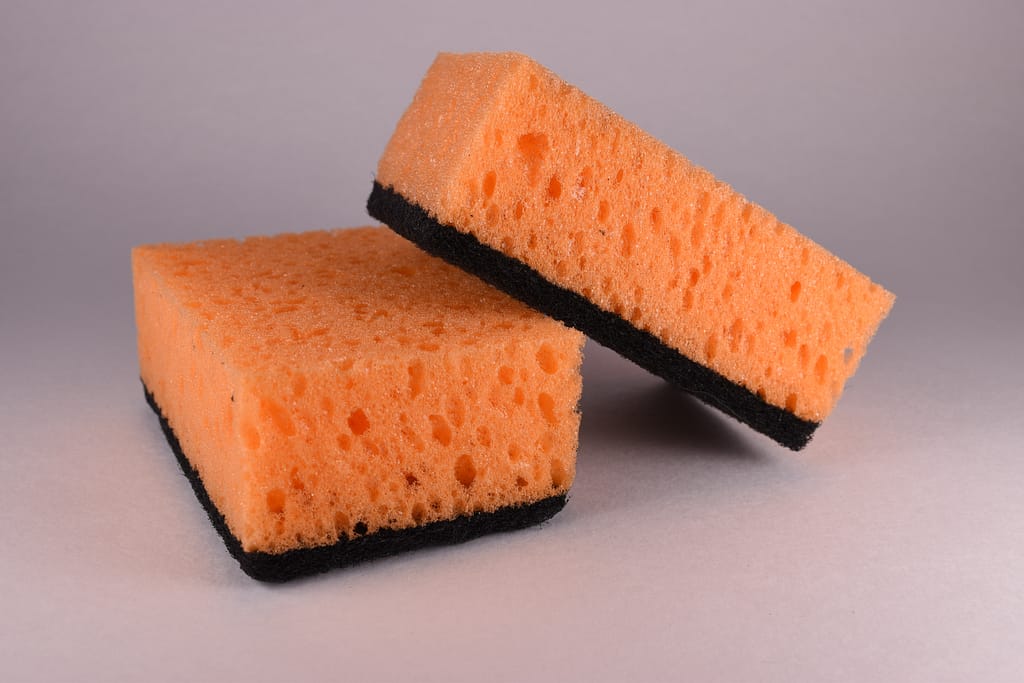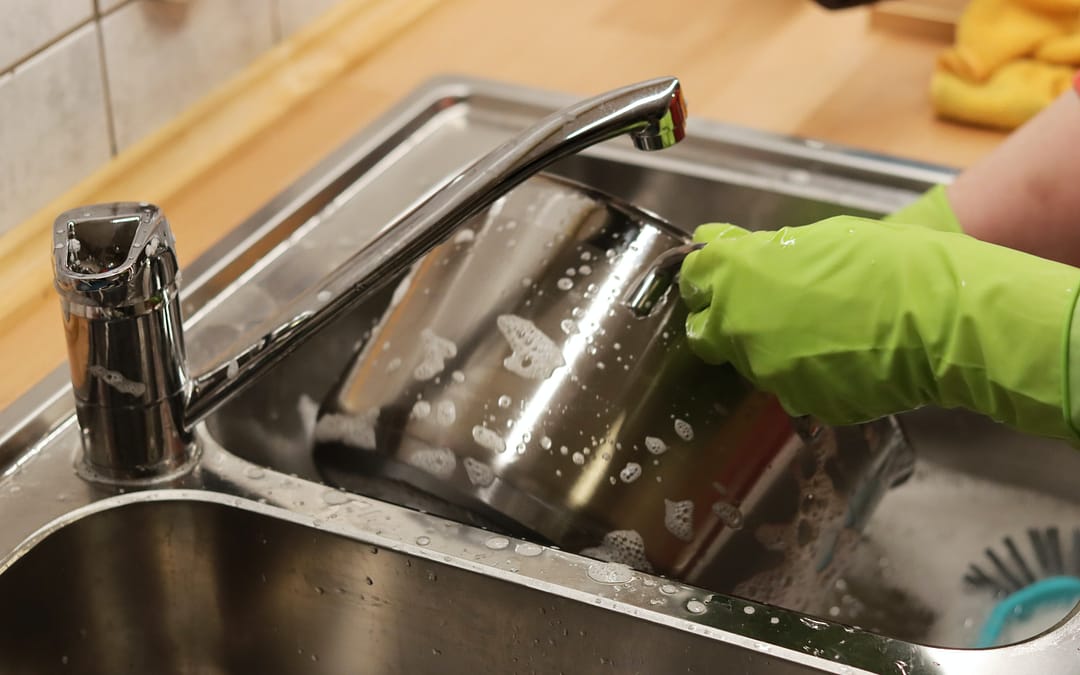This article may contain compensated links, please read our disclaimer for more information.
Your RV sink is probably not something you think much about. Every RV comes with one, and its reason for being is pretty obvious. For the most part, using an RV sink is as easy as using a sink in a house, and honestly, there isn’t much to think about in most cases.
That said, there are those times when your RV sink demands a bit more attention. Perhaps you are brand new to owning an RV and aren’t sure how the sink works, or maybe you just need some tips for using your RV sink more efficiently. In some cases, it might be that your sink is stained and you’re looking for ways to remove those stains, and in other cases it could be that you’d like to replace your RV sink entirely.
If you have questions about your RV sink, you’ve come to the right place. In this article, we will discuss everything you need to know about your RV sink.
How Does an RV Sink Work?
First, let’s talk about how your RV sink works. This section will be useful if you’re brand new to RVing and looking to get a basic idea of how the plumbing in your rig is set up.
RV sink faucets are connected to your RV’s fresh water system. This system can pull water from a freshwater tank using a pump (which your rig likely has built in), but can also be connected to “city” water via an inlet on the outside of your RV. Either method will allow you to have running water in your RV sink when the faucet is opened.
If you choose to hook your RV up to city water, all you have to do is connect a water pressure regulator to a freshwater hose, connect the regulator and hose to the outside spigot, connect the other end to your city water inlet, and turn the water on at the spigot. After doing this, you should have water at your RV sink (and elsewhere throughout the RV).
Those who will be dry camping will need to fill their fresh tank at a potable water spigot before heading to their campsite. Your freshwater fill is on the outside of your RV and is usually labeled as such. Once the tank is filled, you will need to turn the pump on before opening your tap for running water in your sink.
Of course, all of that running water has to go somewhere. This is where your gray water tank comes into play. Water that drains out of your RV sinks goes through the drain pipes and is stored in the RV gray tank. When the tank is full, it must be dumped at an RV dump station or into a sewer connection at your campsite.

How to Clean an RV Sink
Using your RV sink is simple enough, and the directions above should be enough to get you started—but after a bit, you will need to clean your RV sink. What then? Fortunately, cleaning your RV sink is no more difficult than cleaning any other sink.
Cleaning a Stainless Steel RV Sink
If you don’t mind using a store-bought cleaner, Bar Keeper’s Friend is a great option for cleaning your stainless steel RV sink.
Many people don’t like to use chemical cleaners in their RV sinks because they don’t want those cleaners going down the drain and into the gray tank. Others don’t like to use them simply because they prefer to reduce the number of chemicals used in their home.
Either way, if you want to skip the chemicals, baking soda rubbed in the direction of the stainless steel grain should be enough to remove stains. Don’t rinse the baking soda right away, though. Instead, spray the sink down with undiluted white vinegar and let it sit for 5 to 10 minutes before rinsing the whole thing with water.
Want even more stain removing power? Try creating a paste of vinegar and cream of tartar. Gently rub this paste on any stains, let it 5–10 minutes, and rinse.
Cleaning a Plastic RV Sink
Many RV sinks are plastic. These are prone to staining, so you will want to be sure to clean them often. The baking soda and vinegar cleaning method above works well for plastic sinks. The stain-removing paste works as well, but many people prefer to use toothpaste for removing stains from plastic RV sinks.
How to Clean RV Sink Drains
Dealing with stinky RV sink drains? It happens! To put this right, just sprinkle three tablespoons of baking soda down the drain and follow with a cup of white vinegar.
How to Unclog RV Sink Drains
Stains are one common RV sink problem. Another issue that comes up often? Clogged RV sink drains. There are a few ways to handle this issue.
Related: How to Unclog an RV Black Tank
Check Your Drain Vents
There are drain vents on your RV roof. A clogged rooftop drain vent can actually make your sink drain slowly or even prevent your RV sink from draining entirely. For this reason, we recommend checking these vents first.
Baking Soda and Vinegar
Yes, we are putting baking soda and vinegar to work again. You see, the baking soda and vinegar drain-cleaning solution above can actually work to remove some clogs as well. If you have a clogged RV sink, this is the first thing we recommend trying.
Plunger
If the baking soda and vinegar don’t do the trick, the next step is to pull out the plunger. In most cases, the plunger will work to dislodge the clog and get things moving again.
Natural Drain Cleaners
The next tool you can pull out is a drain cleaner that won’t hurt your RV’s pipes and holding tanks. You’ll want to look for an enzyme cleaner that uses bacteria to eat away grease, food, and other clogs. Green Gobbler is a great example of this.
Drain Snake
Finally there is the option of using a drain snake. We recommend using this only as a last resort and being very careful as you put the snake down your drain so that you don’t cause damage.
Replacement RV Sink and Faucet
If your RV sink is horribly stained or damaged, it might be time to replace it. This is something most handy people can do, so pull out your tools and get ready for a DIY project.
Replacing an RV Sink Faucet
Perhaps only the RV faucet is damaged and you prefer to keep the actual sink. That’s totally doable and is actually a very simple project. You can use any sink faucet you prefer, but may need to purchase an adapter for some sink types. We prefer removing the old faucet and matching it to the new one to make the process as easy as possible.
The video below will help you get an idea of how to replace your RV sink faucet.
Replacing Your RV Sink
Let’s say your whole sink needs replacing. This is also something you can do, but will take a bit more effort. You may be wondering, “can you put a regular sink in an RV?” The answer is, you can! The trick is simply finding a sink that will fit in place of your current sink or creating a space that is the right size and shape.
The video below is helpful when trying to figure out how to replace an RV sink.
Tips for Using Your RV Sink
Now you know how your RV sink works, how to clean it, how to get rid of clogs, and even how to replace it. That said, there are still a few things you may want to know about your RV sink before we send you on your way.
Here are our top tips for using your RV sink.
Remember to Turn on the Water Heater
Many camping newbies don’t realize that they have to turn their water heater on, and even those who’ve been on the road for years can forget to turn the heater on from time to time. This means washing dishes in cold water, which is never any fun, so be sure to remember to turn on your water heater when you get to your campsite or before you want to wash dishes. (And, leave enough time for the water to fully heat. 30 minutes to an hour usually does the trick.)
Use Water Sparingly
If you’re dry camping, you will be working with a very limited amount of water and limited gray tank space. Even if you aren’t dry camping, you’ll likely be working with a limited amount of hot water. For these reasons, it’s important that you limit your water usage.
Dump Dish Water Outside when Tank Space is Limited
If you are boondocking and looking to save as much gray tank space as possible, consider placing a dish pan in the sink when washing dishes and throwing dirty dish water outside rather than letting it go down the drain.
Get Creative when Washing Dishes
It’s no secret that space is limited in an RV. This means you might have to get creative when washing dishes. Some of our favorite hacks include using a TV tray for extra drying space or investing in an over-the-sink drying rack. You can also use a dish pan set to the side for added sink space if your sink is too small.
Cover the Sink for Additional Counter Space
Lastly, if you have very little counter space (most of us do), you can give yourself some extra counter space while cooking by covering the sink with a sink cover or cutting board. This is an especially useful hack if you’re traveling in an extra small rig.
Who knew there could be so much to know about RV sinks? Hopefully this article answers any and all questions you might have had on the subject so you can quit worrying about your sink and start thinking more about the adventures you’re going to have next!
Join Fulltime Families
Fulltime Families Members get access to the best resources, community and discounts.
Fulltime Families is a participant in the Amazon Services LLC Associates Program, an affiliate advertising program designed to provide a means for sites to earn advertising fees by advertising and linking to amazon.com, amazon.co.uk, amazon.ca. Amazon and the Amazon logo are trademarks of Amazon.com, Inc. or its affiliates.

